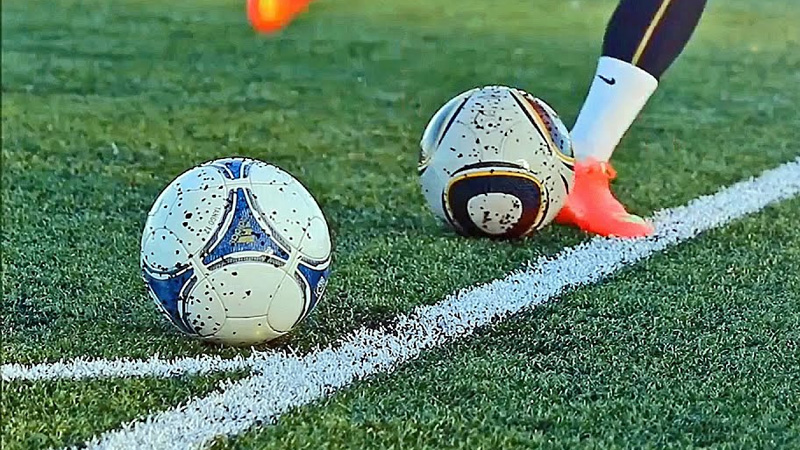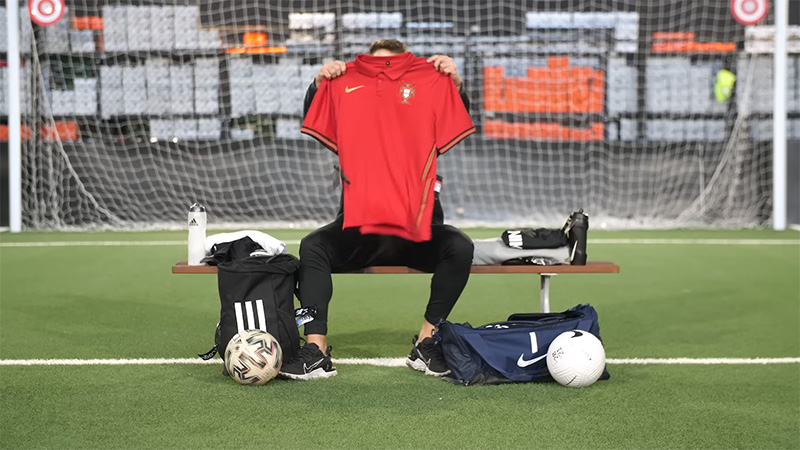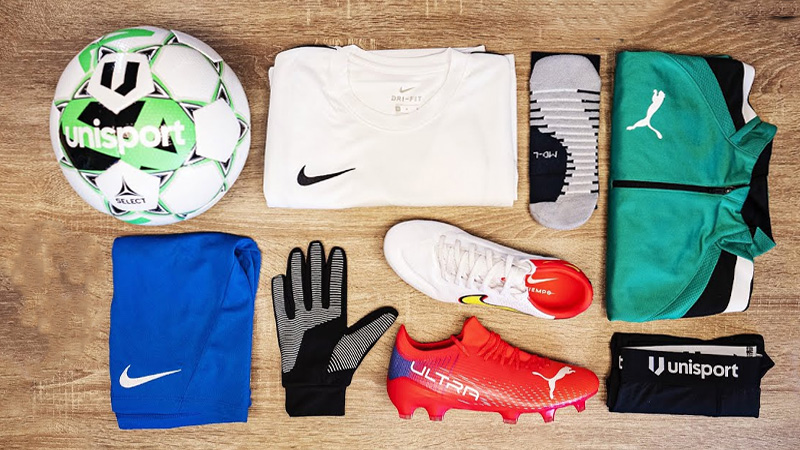Soccer, the beautiful game, is a sport that captivates millions around the world. From the adrenaline-fueled matches to the skillful displays of athleticism, soccer has an undeniable charm.
However, behind the scenes, there are strict regulations governing the equipment used on the field. Understanding these rules is crucial for players, coaches, and referees alike.
In this guide, we delve into the intricate world of soccer equipment rules, shedding light on the dos and don’ts that govern the game.
From the basics of footwear and jerseys to the intricacies of shin guards and goalkeepers’ gloves, we explore the essential gear required for players to participate safely and fairly.
Whether you’re a seasoned player looking to refresh your knowledge or a newcomer eager to learn the ropes, this guide will equip you with the necessary information to navigate the field confidently.
So, lace up your boots, grab your whistle, and join us as we unravel the fascinating world of soccer equipment rules.
What Are the Soccer Equipment Rules?
To ensure fair play and safety, there are specific rules and regulations regarding soccer equipment. These rules cover various aspects, including the ball, footwear, clothing, and protective gear. In this detailed answer, we will explore the soccer equipment rules in depth.
The Ball

The soccer ball is a crucial component of the game. According to the rules set by FIFA (Fédération Internationale de Football Association), the governing body of soccer, the ball must meet specific criteria.
It should have a circumference between 68 and 70 centimeters (27 to 28 inches) and a weight between 410 and 450 grams (14 to 16 ounces) at the start of the match.
The ball’s pressure should be between 0.6 and 1.1 atmospheres (8.5 to 15.6 psi). The ball’s outer cover must be made of leather or another suitable material.
Footwear
Soccer players are required to wear appropriate footwear during matches. The footwear should be designed specifically for soccer and must not pose a danger to the player or other participants.
The soles of the shoes should be made of rubber or similar material that provides adequate grip on the playing surface.
Metal-tipped or metal-studded shoes are not allowed, as they can cause injury to other players. Additionally, the shoes should not have any sharp edges or protrusions that could harm opponents.
Clothing
Soccer players must wear appropriate clothing that distinguishes their team from the opposing team and the match officials. The clothing should be comfortable, non-dangerous, and not pose a risk to the player or others.
The standard soccer uniform consists of a jersey or shirt, shorts, socks, and shin guards. The jersey or shirt must have sleeves and should be numbered on the back. The numbers should be clearly visible and easily distinguishable from a distance.
The shorts should not have any dangerous elements, such as zippers or pockets, that could cause injury. The socks must cover the shin guards entirely.
Shin Guards
Shin guards are mandatory equipment for all players. They are designed to protect the shins from injuries caused by kicks, tackles, or collisions with other players.
The shin guards should be made of a suitable material, such as plastic or foam, and should provide adequate protection to the front of the leg. The guards must be covered entirely by the player’s socks.
Goalkeeper Equipment
Goalkeepers have additional equipment requirements due to the nature of their position. They are allowed to wear gloves, which provide better grip when catching or handling the ball.
The gloves should not have any dangerous elements, such as metal or hard plastic, that could harm opponents. Additionally, goalkeepers are permitted to wear padded clothing, such as padded shorts or shirts, to protect themselves when diving or making saves.
Jewelry and Accessories
To ensure player safety and prevent injuries, the rules generally prohibit the wearing of jewelry or accessories during matches. This includes items such as necklaces, bracelets, rings, earrings, and watches.
However, players are allowed to wear medical alert bracelets or religious items if they are securely taped to the body and do not pose a risk to themselves or others.
Headgear
While not mandatory, players are allowed to wear protective headgear if they have a medical or religious reason to do so.
The headgear must be made of a soft and lightweight material that does not pose a danger to the player or others. It should not have any hard or sharp elements that could cause injury.
Advertising and Sponsorship
Soccer players’ clothing and equipment may display advertising or sponsorship logos, subject to certain regulations. The size and placement of these logos are typically governed by the competition or league rules.
The logos should not interfere with the player’s identification or the visibility of the numbers on their jerseys. Note that while these rules provide a general framework, specific competitions or leagues may have additional equipment regulations.
Players and teams should familiarize themselves with the rules of the particular competition they are participating in to ensure compliance.
Soccer equipment rules cover various aspects, including the ball, footwear, clothing, and protective gear. These rules are in place to ensure fair play, player safety, and uniformity in the game.
By adhering to these regulations, players can enjoy the sport while minimizing the risk of injuries and maintaining a level playing field.
Consequences of Equipment Rules Violations

Violating soccer equipment rules can have several consequences for players and teams.
These consequences are in place to ensure fair play, maintain player safety, and uphold the integrity of the game.
Here are some potential outcomes of equipment rules violations:
Player Disqualification
If a player is found to be in violation of equipment rules, they may be disqualified from the match.
The referee has the authority to remove a player from the field if their equipment poses a danger to themselves or others.
This can significantly impact the player’s team, as they will have to continue the match with one less player.
Penalty or Free Kick
In some cases, equipment violations may result in a penalty or free kick for the opposing team. For example, if a player is wearing jewelry and it is noticed by the referee, the opposing team may be awarded a free kick or penalty kick, depending on the location of the violation.
This can lead to scoring opportunities for the opposing team and potentially change the outcome of the match.
Yellow or Red Card
Equipment violations can also result in disciplinary action in the form of yellow or red cards.
If a player repeatedly violates equipment rules or intentionally uses equipment to gain an unfair advantage, they may receive a yellow card, which serves as a warning.
In more severe cases, such as deliberate use of dangerous footwear or equipment, a player may be shown a red card and be sent off the field, leaving their team with a numerical disadvantage.
Fine or Suspension
In professional soccer, equipment rules violations can lead to fines or suspensions. If a player or team repeatedly violates equipment regulations, they may face financial penalties imposed by the governing body or the league.
In some cases, players may also be suspended for a certain number of matches, preventing them from participating in future games.
Loss of Points or Disqualification from Competition
In organized leagues or tournaments, equipment rule violations can result in more severe consequences.
If a team is found to have repeatedly violated equipment regulations or engaged in deliberate misconduct, they may face point deductions or even disqualification from the competition.
These measures are taken to maintain the integrity of the competition and ensure that all teams adhere to the established rules.
Reputation Damage
Equipment rules violations can also have long-term consequences for a player or team’s reputation.
Engaging in unsportsmanlike behavior or repeatedly violating equipment regulations can tarnish a player’s image and affect their standing within the soccer community.
It can also impact a team’s reputation, leading to negative perceptions from fans, sponsors, and other stakeholders. Players and teams must understand and respect the equipment rules to avoid these potential consequences.
Adhering to the regulations not only ensures fair play and player safety but also helps maintain the spirit of the game and promotes a positive image for individuals and teams involved in soccer.
FAQs
Can players wear glasses or contact lenses during a soccer match?
Yes, players are allowed to wear glasses or contact lenses during a soccer match. However, it is recommended to use sports-specific eyewear or goggles to ensure safety and prevent injury. Regular glasses may pose a risk if they break or shatter during play.
Are there any specific rules regarding the color of soccer cleats?
There are no specific rules regarding the color of soccer cleats. Players are generally free to choose the color of their footwear as long as it adheres to other equipment rules, such as not having dangerous elements or metal studs.
Can players wear long sleeves or tights under their jerseys and shorts?
Yes, players are allowed to wear long sleeves or tights under their jerseys and shorts. These additional layers can provide warmth in colder weather conditions. However, the sleeves or tights should be of the same color as the jersey or shorts.
Are players allowed to wear hats or caps during a soccer game?
In general, players are not allowed to wear hats or caps during a soccer game. The rules state that players should not wear any equipment that could pose a danger to themselves or others. Hats or caps can potentially fall off during play and cause obstruction or injury to players.
Can players wear compression sleeves or arm sleeves during a soccer match?
Yes, players are allowed to wear compression sleeves or arm sleeves during a soccer match.
These sleeves provide support and compression to the muscles, aiding in performance and recovery. However, the sleeves should be of the same color as the jersey.
Parting Words
Understanding and adhering to soccer equipment rules is vital for maintaining the integrity and safety of the game.
From the type of cleats players wear to the size and material of the ball, every aspect of equipment plays a role in ensuring fair play and minimizing the risk of injuries.
By familiarizing yourself with these rules, you not only demonstrate respect for the sport but also contribute to a level playing field for all participants.
Whether you’re a player, coach, or referee, knowledge of soccer equipment regulations allows you to make informed decisions and uphold the spirit of the game.
Remember, soccer is more than just a sport; it’s a global phenomenon that unites people from diverse backgrounds. By embracing the rules and regulations that govern soccer equipment, we can all contribute to the continued growth and enjoyment of this beautiful game.
So, next time you step onto the field, make sure you’re equipped with the right gear, follow the guidelines, and let the magic of soccer unfold.







